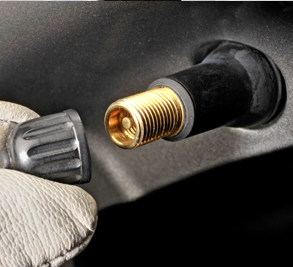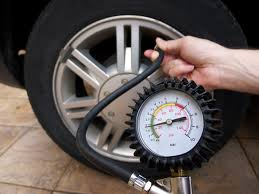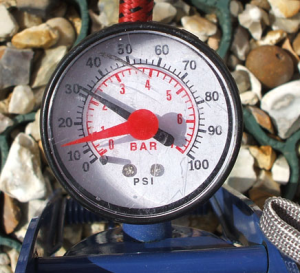How to check your Freelander tyre pressure:
On the Freelander, not only can the wrong tyre pressure mean you use more fuel than you need to, but, if this makes the rolling radius of your tyres significantly different, it could cause damage to your drivetrain; quite a serious issue for such a simple check.
To check your tyre pressure you will need a pressure gauge – either a home gauge or the one at the petrol filling station.
1. Determine the correct tyre pressure you should have:
Before you begin, make sure your Freelander hasn’t been driven far recently and that the tyres are cold (not been driven for 2 hours or travelled less than 2 miles at slow speed) before you check their pressure. If your tyres are hot then add an extra 3 to 4 PSI (0.3 bar) of air into the tyres than recommended, and then recheck the tyres when they are cold.
The recommended tyre pressure for the Freelander 1 was initially 32 PSI (2.21 bar). This was later reduced to 26 PSI (1.8 bar). However, at 26 PSI (1.8 bar) it was found that the tyres were wearing unevenly and their recommendation reverted back to 32 PSI (2.21 bar). What is possibly more important with the Freelander 1 is for all four tyres to be at the same pressure and generally a pressure around 30 PSI (2.1 bar) is satisfactory for most conditions.
On the Freelander 2 the recommended tyre pressure is 32 PSI (2.21 bar) for both normal conditions and while towing.
Many petrol filling station tyre pressure gauges allow you to set the desired tyre pressure on the machine before you start checking the pressures. If this is the case then follow the instructions to set the desired tyre pressure according to which Freelander you have, your load and whether your tyres are hot or cold.

2. Unscrew and remove your wheel’s valve stem cap located on the wheel – it can be worth removing all four before you begin, especially if you are paying for air at a petrol filling station, but make sure you keep them in a safe place as they are easy to lose!

3. Press the pressure gauge into your valve stem and push to receive a pressure reading (there may be a lever to lock this onto the valve stem).
Often, if you are using a gauge at the petrol filling station, the machine will ring a bell if the tyres are at the correct pressure, otherwise you will need to read the reading from the gauge and determine whether your pressure is correct, too high or too low. Make sure you are reading the correct scale, PSI or Bar.
4. If the pressure in your tyre is too low, you will need to add air to the tyre. At a petrol filling station this is usually as simple as pressing and holding a lever or button on the gauge until the desired pressure is reached – often the system will ring a bell when it reaches the desired pressure which you set at the beginning of the process. If your gauge is not connected to a compressor you will need to have access to an air pump in order to inflate the tyre to the desired pressure.

5. If the pressure in your tyre is too high you will need to remove air from the tyre. There is a metal pin in the centre of the valve stem. Using a flat headed screwdriver press the metal pin inwards, this will release the air. Intermittently re-check the tyre pressure until the desired pressure is reached. On the tyre pressure system at a petrol filling station this should be an easier process achieved by just pressing a button or tilting the air nozzle – check the instructions on the machine.

Tyre presures quoted here are not quite right.
It depends on the rim size. My MY2011 SD4 HSE has 19″ rims and should be 35psi all round
Check your tire pressure every time you fill your car with gas to ensure that you’re getting the most out of your tires – and that your tires are being treated well.
Hi Sue,
Does the wheel pressure increase at the same rate in all the wheels? If no; can the varying increase and or decrease in pressure in individual tyre cause harm to the driving train especially the VCU in freelander 1? Let me know the pressure range that can cause harm on the drive train.